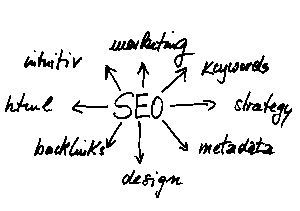HowTo Structured Data is a powerful tool for developers and creators to enhance user experience and SEO performance by providing clear, multimedia step-by-step instructions using JSON-LD schema markup. It improves search engine understanding, boosts visibility in search results, increases click-through rates, and encourages longer user engagement. Success depends on balancing high-quality images with rich textual content, accurately representing steps and providing context for search engines. Implementing HowTo Structured Data leads to better engagement metrics, increased online traffic, and improved website SEO Tagging, making tutorials more accessible and visually appealing. Measuring key metrics like CTRs and user behavior indicates its positive impact on rankings and user satisfaction.
“Revolutionize your online content with HowTo structured data markup, enhancing search result displays for step-by-step instructions. This schema enables rich snippets featuring images and instructional context, improving user engagement. Learn how to effectively structure your content, integrating structured data seamlessly into existing web pages. Discover key elements, best practices, technical considerations, and measurement strategies for maximizing the impact of HowTo markup on search rankings.”
- Understanding HowTo Schema: A Structured Approach to Content Markup
- Enhancing Search Display: Benefits of Using HowTo Schema for Step-by-Step Instructions
- Key Elements of a Successful HowTo Markup: Images and Contextual Information
- Implementing HowTo Schema: Best Practices for Effective Content Structure
- Technical Considerations: Integrating Structured Data with Existing Web Pages
- Measuring Success: Evaluating the Impact of HowTo Schema on Search Rankings and User Engagement
Understanding HowTo Schema: A Structured Approach to Content Markup

Understanding HowTo Schema is a structured approach to content markup that allows search engines to better comprehend and display step-by-step tutorials. By using this schema, developers and creators can provide valuable instruction in a rich, multimedia format, enhancing user experience and boosting SEO performance. It offers a standardized way to represent procedures, ensuring consistency across various platforms.
This method involves utilizing structured data, such as HowTo JSON-LD, to mark up content with essential details like steps, ingredients (for recipes), or tools required. Incorporating images alongside these tags adds visual context, making instructions easier to follow. With proper HowTo SEO Tagging, tutorials can achieve higher visibility in search results, attracting more engaged users and ultimately driving better online performance.
Enhancing Search Display: Benefits of Using HowTo Schema for Step-by-Step Instructions

Using HowTo structured data marks up step-by-step content, enabling search engines to better understand and display instructional material in rich results. This enhances user experience by providing clear, concise guidance directly within search results, reducing the need for clicks to access full articles. By incorporating images and contextual instructions alongside steps, users are treated to a visually appealing and informative snippet that meets their specific needs.
The benefits extend to improved SEO as well. Search engines prioritize content that offers direct answers to user queries, and structured data for HowTo guides signals this intent effectively. This can lead to higher search rankings for relevant queries, driving more organic traffic to your site. Additionally, rich results for HowTo content encourage clicks due to their eye-catching presentation, potentially increasing engagement and time spent on the page.
Key Elements of a Successful HowTo Markup: Images and Contextual Information

A successful HowTo structured data markup relies on a harmonious blend of textual and visual elements. High-quality images play a pivotal role in enhancing the user experience, making complex steps more accessible and engaging. These visuals should be thoughtfully chosen to accompany each stage of the tutorial, offering a clear representation of the action or outcome. Contextual information, such as descriptive alt text and captions, further enriches the markup. This textual context provides search engines with valuable insights into the content, ensuring that the rich result for HowTo queries is not only visually appealing but also informative and relevant.
By integrating these key elements—images and contextual data—into your HowTo SEO Tagging strategy, you can significantly improve the visibility and click-through rates of your tutorials on search engines. The Tutorial Schema Markup allows for a structured presentation of step-by-step instructions, making it easier for users to scan and comprehend before deciding to interact with the content. This, in turn, contributes to better engagement metrics and a more positive user experience.
Implementing HowTo Schema: Best Practices for Effective Content Structure

Implementing HowTo Structured Data is a game-changer for content creators aiming to boost their online visibility. When structuring step-by-step content using the HowTo Schema, it’s crucial to prioritize clarity and completeness. Begin by defining the problem your guide solves and outlining each step in a logical sequence. Each step should be concise yet comprehensive, guiding readers through the process from start to finish. Incorporate relevant images at strategic points to enhance visual appeal and better illustrate each stage.
For optimal SEO, use HowTo JSON-LD to provide rich snippets in search results, showcasing your content’s instructional value. Ensure your schema markup is accurate and follows best practices for consistency. Include essential details such as the required tools, materials, and any safety precautions. By implementing these techniques, you’ll create a compelling Schema for Guides that not only improves user experience but also enhances your website’s HowTo SEO Tagging, making it more attractive to search engines and increasing your chances of appearing in featured snippets.
Technical Considerations: Integrating Structured Data with Existing Web Pages

Integrating structured data, specifically the HowTo schema, with existing web pages is a technical yet impactful step to enhance online content presentation in search results. This process involves carefully marking up each step-by-step instruction as a structured data snippet, providing search engines with a clear understanding of the instructional context. The HowTo schema, when implemented correctly, can lead to rich results for how-to queries, displaying both text instructions and relevant images directly within the search result.
For web developers, implementing this structured data format requires familiarity with JSON-LD (a lightweight data serialization standard) to create valid schema markup. By adding this contextual information, websites can offer a more user-friendly experience, as potential users can quickly scan through visual and textual cues, making it easier to find the solution they need without clicking through to the article. This strategic approach ensures that instructional content is not only search-engine friendly but also visually appealing and accessible to a broader audience.
Measuring Success: Evaluating the Impact of HowTo Schema on Search Rankings and User Engagement

Measuring the success of implementing HowTo Structured Data is a crucial step to understand its impact on search rankings and user engagement. By evaluating how effectively the schema enhances visibility in search results, we can gauge its effectiveness. One key metric to track is click-through rates (CTRs) for content marked up with HowTo JSON-LD or Tutorial Schema Markup. A higher CTR indicates that the structured data is compelling search engines and users alike, making the content more attractive and relevant.
Additionally, analyzing user behavior on these pages can reveal valuable insights. Tracking time spent on the page, bounce rates, and the number of steps completed within a guide can demonstrate improved engagement. These metrics suggest that the organized presentation of instructions and visual aids facilitated by schema markup encourages users to interact with and complete tutorials, ultimately leading to better search rankings due to increased user satisfaction and reduced bounce rates.
